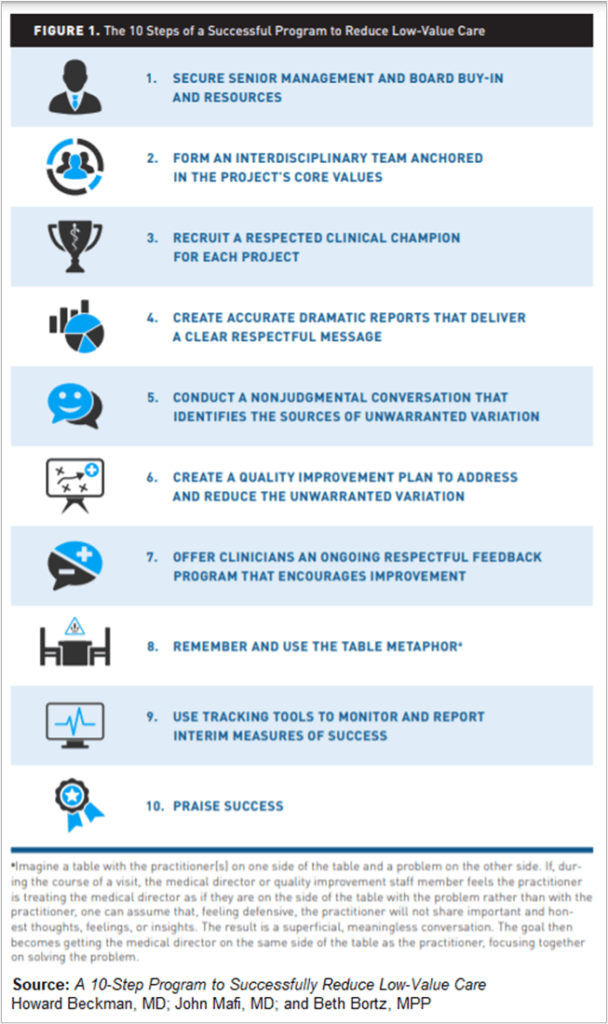Implementing 10-Step Program to Improve Reduce Low-Value Care
Low-value care can be reduced by a data-driven process anchored in nonjudgmental communication and explicit core values

May 17, 2021 – Healthcare costs in the United States have continued to rise. Currently, health care expenses in the U.S. are just shy of 18% of the country’s GDP. Of this, 10% to 20% is estimated to be spending linked to low-value health services. In order to reduce health care costs, it is essential to properly identify and reduce low-value care (LVC).
Low-value care is defined as patient care that offers little to no benefit to patients in clinical scenarios. They add costs and may actually harm patients through adverse outcomes or effects.
According to a recent review from Howard Beckman, MD; John Mafi, MD; and Beth Bortz, MPP, there is a 10-step program that can successfully reduce low-value care. These authors have been working to identify and reduce LVC for over 15 years. Their practical, 10-step approach is designed to integrate low-value care reduction programs into medical systems.
Historical Difficulty of Reducing Low-Value Care Services
Reducing low-value care has its obstacles. There are often financial incentives to deliver more services, even if they are not necessary to the patient in specific clinical situations. In addition, the practice of defensive medicine, habit, training, and culture have increased the difficulty of reducing LVC.
Reducing LVC is essential for not just decreasing health care costs, but also reducing the risk of harm to the patient. There have been other approaches taken to reduce low-value care. This includes awareness and public education campaigns, making the LVC services harder to order, and payment reform from Accountable Care Organizations. Despite this, there has been no long-term, consistent strides made in reducing LVC.
LVC Can Be Reduced by Data-Driven, Communication-Laden Process
At the core of the 10-step program is data, nonjudgmental communication, and focusing on explicit core values. The researchers outline a program that focuses on changing human behavior through the process of sharing information, building trust, and soliciting feedback.
There is also an emphasis placed on empowering clinicians to lead the change on their own terms. Research has shown that when given the chance to do what is right, practitioners are eager to excel and participate in LVC reduction programs.
The image below shows the 10 steps of a successful program to reduce low-value care.

Key Takeaways
When working to reduce low-value care, it is important to pay careful attention to the creation and rollout of practitioner reports. Utilizing these reports is critical to the success of any program to reduce LVC.
In addition, it is important to respectfully collaborate between medical directors and quality improvement staff. These individuals are all crucial to the success of the project and getting buy-in across the board can improve the chances of success.
Overall, by removing perverse incentives and focusing on what is right, organizations can work to reduce low-value care and the costs and potential patient harm that comes with it.
The VBP Blog is a comprehensive resource for all things related to value-based payments. Up-to-date news, informative webinars, and relevant blogs in the VBP sphere to help your organization find success.
More Trending Topics:
Value-Based Care Stories
Get even more VBP insights on LinkedIn & Twitter

The VBP Blog is a comprehensive resource for all things related to value-based payments. Up-to-date news, informative webinars, and relevant blogs in the VBP sphere to help your organization find success.











